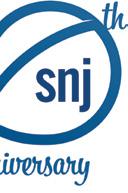
Details on Pages 3-6










Details on Pages 3-6








on Pages 8-9






Details on Page 16 A development in St. Adolphe is on hold following the revelation of historical graves at 420 Main Street.
Pages





1-204-388-4600 feedback@whereyoubelong.ca www.whereyoubelong.ca


If you do not receive a copy of the bill, please feel free to contact the Town Office for a copy (email taxes@whereyoubelong.ca or call 204-388-4600 ext. 1109).
New property owners are reminded that they are responsible for the payment of the taxes whether or not they have received a tax notice in their name.
All payments must be received at the Town Office, 329 Bronstone Drive, Niverville by 5 p.m. on September 27th, 2024. Cheques may be post-dated to the due date (Sept. 27. 2024) but must be received by the Town Office on or before September 27th, 2024 by 5 p.m., or they will be considered late and will be subject to a penalty. Receipts may be emailed upon request or picked up at the Town Office.
All taxes remaining subsequently unpaid are subject by law to a penalty of 1.25% per month (compounded annually). STATEMENTS CURRENTLY SHOWING ARREARS WILL HAVE ADDITIONAL PENALTIES. Call the Town Office or log into your eServices account for an updated balance on the day the payment is remitted. Note that penalties are posted on the first of every month. (Please allow 3 business days for bank processing).
Cheques or money orders should be made payable to the “Town of Niverville”. Visit www.whereyoubelong.ca for the various payment options.



















Did you know that we have energy efficiency advocates in Manitoba? Their role is designed to serve the local community, helping homes and businesses save energy, money, and the environment.
Advocates are familiar with their community and Efficiency Manitoba’s offers. And you may have one in your area! Saving is easier when we work together — and even easier when we bring the savings straight to you.

By Brenda Sawatzky LOCAL JOURNALISM INITIATIVE REPORTER m bsawatzky@nivervillecitizen.com
Although the skies have been sunny in August, this past month has paradoxically been extra stormy.
Ever since word broke that Niverville would host a public hearing from the Winnipeg Metro Region (WMR) over its proposed approach to regional planning, our local communities—not to mention the other 16 municipalities in the WMR—have been in an uproar.
Hundreds of attendees were sent home on August 8 after it was announced that the public hearing had to be postponed. The reason: the Heritage Centre venue could not safely accommodate the unexpectedly large crowd.
The focus of the public hearing was Plan20-50, a 127-page document developed by the WMR to operate as a guide to regional planning. The meeting was to be the second of two public hearings organized by the WMR, following which Plan20-50 would be submitted to the province for approval and then pass through a final WMR vote.
Plan20-50 is intended to delineate the Manitoba capital region’s 30-year plan when it comes to coordinating land use, services, and infrastructure.
According to the WMR, it “sets the blueprint for a resilient, sustainable, and globally competitive region. Plan20-50 considers community

growth and development, infrastructure investment and servicing, regional economic development, watershed and natural asset stewardship, climate resilience, agriculture and resources, and collaboration with Indigenous Nations.”
If approved, the plan would go into effect in January 2025.
But so far, nothing has gone according to plan.
Passions were running high for the hundreds of people being turned away from the Heritage Centre. RCMP were on site to hold crowds back from pushing their way inside. Security guards were scattered throughout for crowd control. Angry slurs were yelled by some guests, echoing a sense of general displeasure from the crowd waiting outside.
One group chanted, “Let us in. Let us in.” This was followed by another group inside the meeting room chanting, “Let them in. Let them in.”
Minutes before the meeting’s scheduled start time, a WMR representative announced that the meeting had to be postponed until.
The new meeting date and location have yet to be announced.
Almost one week later, on August 14, the Town of Niverville made public their intent to oppose the plan as outlined.
“The Town of Niverville council does not support Plan20-50 without significant amendments to protect the interests of Niverville,” reads a



statement from the town.
According to town council, there are at least four fatal flaws to Plan2050 that will need to be addressed before they can endorse it.
“Council is advocating that the province of Manitoba convene a meeting of all councils of the Winnipeg Metro Region and present a plan on next steps to address the local level challenges and how they will be implemented in an improved Plan20-50,” the statement reads. “Or have the legislation repealed.”
The first of council’s concerns relates to Niverville’s forced membership in the WMR, which was mandated by the provincial government in the spring of 2023.
There needs to be an exit clause, they say, by which towns and municipalities can opt out of the WMR.
“Town council has advocated on multiple occasions that this forced inclusion by the province into a region which we have not belonged is an error and needs to be corrected,” reads the statement. “The town continues to advocate for correction of this, or that Bill 37 be amended to provide a mechanism for a community to withdraw with sufficient notice from the Winnipeg Metro Region.”
Echoing a concern on many residents’ minds, town council agrees that, as it stands, Plan20-50 and Bill 37, the Municipal Planning Act which directs Plan20-50, remove autonomy and decision-making

(continued from page 3)
“Plan20-50 needs to be revised and further developed to ensure that final land use planning decisions remain in the hands of locally elected officials at the community level.”
Niverville’s council see worrisome financial implications to their WMR involvement as well.
“Plan 20-50 does not define what financial contribution will be required if the plan is approved,” the statement continues. “[It] proposes dozens of studies and reports to be completed over the next decades, some of which may benefit Niverville and others which may be irrelevant. All of these reports and studies come at a cost—and that cost would need to be recouped through local level municipal taxation.”
The provision of some cost guarantees from the province as well as a sober second look at the need for the required reports and studies will be needed if Niverville is to endorse the plan.
Finally, council asks that an amended Plan20-50 acknowledge Niverville as a transition zone in the WMR due to its unique position on the very outskirts of the region.
“The current plan will create further urban sprawl away from Winnipeg due to the discrepancy in costs to build outside the WMR, as opposed to inside the WMR.”
Niverville isn’t alone. In recent months, at least five WMR municipalities have formally expressed concerns over the wording of Plan20-50 or the potential of lost autonomy if it is enacted in its current form.






The turbulent and controversial rollout reached a crescendo on Tuesday, August 20, with several key developments.
Prominently, Premier Wab Kinew made public his intention to allow WMR member municipalities the ability to opt out of the capital planning region as early as the upcoming fall. Among the WMR’s 18 municipalities, those deciding to opt out will, by extension, no longer be subject to the conditions set out in Plan20-50.
Also on August 20, Ritchot Mayor Chris Ewen released a statement which he says was made on his own behalf and not that of Ritchot’s council.
According to Ewen, his statement had already been shared with the premier’s office and other provincial representatives, as well as members of the Winnipeg Metro Region (WMR) and the Association of Manitoba Municipalities (AMM).
“I am writing today to express my concerns about what we are seeing










between our communities, municipalities, and our province,” Ewen writes. “As a previous board member at the WMR, I was proud to promote regional collaboration and exciting initiatives that would benefit not just the municipalities around the WMR, but essentially the whole province through shared economic goals, sustainable planning, and stronger funding positions.”
In recent times, he says, a lack of communication from the province over Plan20-50 and certain directives from the WMR have raised concerns.
“This letter is not to express my position either for or against the plan itself, but to indicate my concern about the misinformation and the lack of clarification allowed from the WMR board members.”
Ewen refers to a letter received from the WMR requesting that, during the public hearing process for Plan2050, board members not communicate about it with their constituents.
To Ewen, though, recent outcry suggests this is the most critical time for councils to be fielding questions from the public, especially when it concerns a document that has the






power to affect more than a million people living in the region.
“I watched a handful of municipalities send statements to the public without working collaboratively with the rest of the WMR municipalities, creating an even stronger divide between Manitobans,” says Ewen.
“We now receive daily calls and emails from residents asking us to take the same stand. As mayor, I believe this was the wrong approach and now more backlash is happening to those that are respecting collaboration.”
In the end, Ewen says, he’s simply asking that Plan20-50 undergo a thorough review by the province in order to help put an end to the undue stress being inflicted on municipal leaders, not to mention the “separation of neighbouring municipalities, threats, and forced position making.”
A collective of Plan20-50 opponents filed into Niverville’s council chambers at the opening of their regularly scheduled council meeting that very same evening of August 20.
Mayor Myron Dyck opened the
meeting with a reminder to attendees that Plan20-50 and the WMR were not on the agenda and would not be addressed that night.
“If you have questions or concerns, in order to get consistent messaging instead of 18 mayors trying to speak to 18 different municipalities, please contact the WMR office or Minister Ian Bushie, Minister of Municipal Affairs.”
Dyck indicated that the WMR’s executive director and board chairperson were working to get a meeting with Bushie to find out what the next steps should be.
“Until such a time as that, we are all waiting,” he added. “Whether they’re going to go forward with it, amend it, abandon it, we don’t know what they’re going to do.”
Several in the crowd expressed their discontent with Dyck’s unwillingness to let them speak to the issue.
This disruption caused Dyck to issue a warning, suggesting that the RCMP would be called and they would be asked to leave if they chose not to comply.
“This is an interruption of a council meeting for which people have registered to be on the agenda and you’re doing them a disservice,” Dyck stated.
One attendee stood and handed an envelope to the mayor, indicating that its contents contained a notice of liability. This person and the majority of attendees then left the meeting venue.
The balance of the meeting continued uninterrupted.
At the close, RCMP officers arrived in time to escort council and the balance of the attendees past the waiting Plan20-50 opponents outside the building.







By Brenda Sawatzky LOCAL JOURNALISM INITIATIVE REPORTER
m bsawatzky@nivervillecitizen.com
Mere weeks ago, the term “Plan20-50” would have meant nothing of significance to most residents of southeastern Manitoba. Today it has become one of the most controversial subjects possible.
This is true, at least, for many people living in the 18 municipalities of the Winnipeg Metro Region (WMR). It’s also true that there are at least as many residents in this region who have no idea why Plan20-50 has become such a hot topic in the first place.
This article endeavours to shed light from multiple perspectives to help readers make their own informed decisions.
The WMR is one of many capital planning regions across Canada. They are designed to serve as collaborative bodies between a province’s capital city and its surrounding municipal governments.
The function of any capital planning region is to create networking partnerships so local councils can work cohesively on land use planning, economic development, environmental initiatives, and other concerns of regional interest.
In Manitoba, the capital planning region has been around for 26 years.

components of the plan.
voting rights.
Each municipality was required to appoint a representative to serve on the board of directors. Mayor Myron Dyck represents Niverville and Deputy Mayor Shane Pelletier represents the RM of Ritchot.
In addition to the 18 local government representatives on the board are four provincial appointees, including the board’s chair and vice chair. Two of these appointees represent the Manitoba Métis
The province, alongside a host of experts, officials, and stakeholders, weighed in. The plan went back to the drawing board numerous times before the board deemed it ready to vote into existence.
According to Planning Act due process, the document has to pass through two public hearings, one in Winnipeg and another in a rural community within the WMR.
The first was held in late July. It drew a significant crowd of residents.
On August 8, the second public hearing was scheduled to be held at the Niverville
“This private corporation that’s unaccountable to the taxpayer, unaccountable to the individuals who voted in their respective councils [is] now able able to create, administer, and enforce a bylaw throughout the entire 18 regions.”
Ken Lee | Vocal Opponent
Federation and Treaty One.
One of the board’s first mandates, as set by the province, was to establish Plan 20-50, a 30-year plan to work toward common goals.
The four policy lenses of Plan20-50 involve creating a plan for climate resilience; for the protection, enhancement, and restoration of water, land, and natural resources; for reconciliation; and for economic and technological transformation.
The WMR board set out to develop the many
In 2021, the provincial government made changes to the Planning Act and, at the same time, changed the fabric of the WMR. Membership, which had been optional, became mandatory. Some municipalities without representation were pulled in.
Heritage Centre. Due to the venue’s limited capacity of 300 and an overwhelming crowd, this hearing had to be postponed.
In order to better understand the intricacies, intent, and potential impact of Plan20-50, The Citizen reached out to three key people.
Jennifer Freeman, executive director for the WMR, was hired by the board of directors, not appointed by the province. She has no WMR
Ken Lee is a Winnipeg resident and professional chartered accountant. For 13 years, he acted as chief financial officer for the Progressive Conservatives.
Finally, Clarence Braun is a lifelong Niverville resident, active volunteer, local entrepreneur, and someone with a keen interest in all levels of politics.
In the paragraphs to follow, we’ll look at the hot button issues inside Plan2050 as well as the Planning Act and how these three individuals approach each one.
In recent weeks, Ken Lee has been a vocal opponent to Plan20-50. He admittedly became aware of its existence only recently.
One of Lee’s primary objections has more to do with the framework under which the WMR board operates. This framework, he says, makes the plan dangerous.
Lee refers to Bill 37: The Planning Amendment and City of Winnipeg Charter Amendment Act, which directs the formation and operation of the WMR board.
Under this Act, the WMR is set up as a corporation without share capital. Further, the Act gives the corporation power to administer and enforce the development plan bylaw as well as zoning and building bylaws of municipalities.
For Lee, the financing of this corporate body is also a matter of grave concern.
(continued on page 6)

































(continued from page 5)
The Act states, “The regional member municipalities must agree on the amount or proportion of funding that each member municipality is to contribute to meet the expenses of the planning region.”
If no agreement can be reached, “the minister must prescribe the amount or proportion of funding that each member municipality must contribute.”
Set up as a corporate body, seemingly separate from the provincial government, Lee wonders why they’ve been allotted such broad power and to whom they are accountable.
“I found it a little concerning that a private corporation would not only administer what they created but they get to enforce it too,” Lee says. “This private corporation that’s unaccountable to the taxpayer, unaccountable to the individuals who voted in their respective councils, they are now able to create, administer, and enforce a bylaw throughout the entire 18 regions. And yet they are using taxpayers’ money because the WMR is funded by the municipalities.”
For Lee, the only way to have real accountability is to have a process whereby the WMR board members are elected and function as a non-corporate entity.
Freeman calls it a common misunderstanding that the WMR operates as a private corporation. In reality, this body is a statutory corporation. Its lack of share capital simply means that it has no shares to hold or sell.
The definition of a statutory corporation is a government entity created by statute. These are corporations owned and controlled by a government to the extent provided for by legislation.
The Town of Niverville, for example, is an incorporated entity that operates under the authority of higher levels of government.
Braun says that it would be unreasonable to expect any provincial government to set up a corporation whose mandate is to carry out regional planning and then fail to exercise their own authority over that corporation.
The province, he adds, provides accountability to the WMR and has the ultimate authority to override its decisions. Case in point, Plan2050 cannot be voted into existence


without first passing through the hands of the Minister of Municipal Relations, Ian Bushie, for his approval.
Another major point of contention for Lee is the governance structure of the WMR board.
Looking at the WMR bylaws, a quorum—in other words, the minimum number of board members required for a vote—is only met when a majority of the board members are present.
More importantly, Lee notes, the mayor of Winnipeg has to be present or the vote cannot be held.
Lee calls that a dictatorship.
“Even if all of [municipal leaders] get together and disagree with the city, we still lose,” says Lee. “The city wins every time.”
To that concern, Braun says that it’s actually imperative for the mayor of Winnipeg to be at the table when important decisions are made. He or she does, after all, represent the vast majority of the region’s population.
When one considers that the village of Dunnottar, with a population of 487, gets one vote at the table and the city of Winnipeg, with a population of nearly 800,000, also gets only one vote, it should be clear why Winnipeg’s absence would have a far greater impact than any other board member’s absence.
a person’s land in order to create enough housing units to meet the WMR’s targets.
Braun agrees that expropriation is an unfortunate mechanism for obtaining land, but it’s a tool that higher levels of government have always had. Since the WMR operates under the province’s authority, in Braun’s mind, their authorities are one and the same.
“Forcing people off their property is always a bad idea,” Braun says. “Having said that, there are times when the public good demands it.”
Braun gives the example of Manitoba Hydro’s bipole system, which was erected across the province in recent years. The government determined that it was needed in order to bring high-voltage electricity to
For this reason, the WMR has created a page on their website with answers to the most frequently asked questions.
That page addresses the topics of 15-minute cities, priority access to roads, privately owned wells, and the plan’s approach to local environmental concerns.
“I think I know what most of the concerns are about,” Freeman says. “It’s about electric vehicles, it’s about people thinking we’re forcing them to buy EVs, that people won’t be able to use their car, that they’ll have to take the bus. People think the plan is about closing off access to roads and wells and about imposing 15-minute cities. None of that is true.”
“We think so narrowly about our own self-interest... If we were to become more communicative, more relational, and more understanding, could we create something better together? If more people are at the table caring about the same things, does it make things more possible? Or do we just continue to fight each other?”
Clarence Braun | Niverville Resident
every area of Manitoba.
Reading through the Planning Act, Lee points out that the general powers of the WRM should also raise public concern. Primarily, he points to the WMR’s right to acquire land for the purpose of implementing the regional plan.
One tool the WMR has to accomplish this, if necessary, is expropriation. Expropriation refers to the process of taking private property without the owner’s explicit consent.
Lee says it’s downright scary to consider this power being used for the express purpose of carrying out Plan20-50’s objectives.
He points out that this is especially true in light of the fact that population density targets have been laid out in the plan for every one of WMR’s municipalities.
For Lee, this leaves the door wide open for the confiscation of
Erecting the poles effectively and efficiently meant, at times, running them through people’s private property. Braun knows of a number of local farmers who refused to accept the compensation offered by the government in return for a piece of their land.
In the case of these farmers, the land was expropriated since the bipole was deemed necessary for the public good.
Right or wrong, Braun says, it is a power they hold and it’s not new.
In just one article, it’s impossible to cover the extent of the concerns that opponents to Plan20-50 have expressed.
While Freeman doesn’t discount people’s right to question the principles laid out in the plan, she contends that much of the plan is being misinterpreted.
In the end, she says, it’s about the provision of essential services as opposed to putting restrictions on people’s lifestyles. It’s about exploring technologies that have lower environmental impacts while not imposing them on the unwilling.
As for the plan’s reference to “complete communities,” or what opponents call 15-minute cities, Freeman says that the intention here is also being misunderstood.
“Plan20-50 imagines neighbourhoods where people have access to stores and parks and seniors housing and schools,” Freeman says. “It doesn’t limit how people get around. Instead it’s about making sure that what we need most is close by. It’s about, ‘Can we grow old in our communities?’”
Freeman references the many communities in Manitoba that still don’t have the resources to allow aging residents to complete their lives in their hometown. This, she says, is exactly the kind of issue that Plan20-50 seeks to address.
For other residents, finding affordable housing options or solutions to the high costs of vehicle ownership are important. For this reason, the WMR board will be tasked with finding solutions, like Park and Ride options, so that anyone can live in any community they choose, without barrier.
Enhancing the region’s global competitiveness is also a primary objective of the WMR board.
“The reason we’re doing this is because we want to compete with other metro regions across Canada,” Freeman says. “We’ve heard from site selectors who want to establish companies here… but we’re being overlooked because we’re not planning together across our municipalities. It’s about land use planning and servicing. And when we lose out on these dollars, good companies with good-paying jobs go to Edmonton or Calgary or Quebec or any place that is planning on a regional level.”
The loss to Manitoba is felt in more than just the jobs not created, she adds. It’s also about the human resources—in other words, our trained workers—who are leaving our province for better jobs elsewhere.
Braun can attest to these losses on a local level. In recent years, he says, Niverville has lost opportunities when companies came inquiring about commercial space.
“We’ve had two or three bitcoin-mining companies reach out to us and try and locate in the industrial park, but we don’t have the electrical power to support them,” says Braun. “So they moved on.”
Braun admits to feeling a level of bewilderment and disappointment when it comes to the polarization that Plan20-50 has evoked.
“We think so narrowly about our own self-interest,” Braun says. “I love my community, but we’re just a small part of something bigger. What is Niverville apart from everybody around us? What is Niverville if the city of Winnipeg isn’t there? It isn’t Niverville. These are legislated boundaries that we exist in, but they shouldn’t separate us as people. They’re just boundaries by which we function. If we were to enlarge the boundary and become more communicative, more relational, and more understanding, could we create something better together? If more people are at the table caring about the same things, does it make things more possible? Or do we just continue to fight each other?”
To learn more about Plan20-50, visit: www.winnipegmetroregion.ca
To ask questions about WMR or Plan20-50, email: info@wmregion.ca



































EVERY MONDAY NIGHT AT SMITTY’S NIVERVILLE












SEPTEMBER 23 WEEK #1 SEPTEMBER 23 WEEK #1


6:00 P.M. - 8:30 P.M. | DRAW TO BE HELD AT 8:30 P.M.














By Brenda Sawatzky
LOCAL JOURNALISM INITIATIVE REPORTER m bsawatzky@nivervillecitizen.com
According to Statistics Canada, based on data from 2022, 27 percent of Canadians aged 15 years and older live with at least one kind of disability.1
This being true, much work needs to be done to make our communities more accessible.

e Reformer John Calvin stressed the fact that the entire world was created with the purpose of displaying God’s glory. Furthermore, creation is the theatre in which God’s glory is most fully displayed as he works to reconcile sinners to himself in Jesus Christ. In this, the Reformed recognize that salvation is the work of God alone. Contrary to Arminian theology, the Reformed maintain that salvation is not a joint e ort on the part of God and man. “Salvation belongs to the LORD,” and so there is no participation trophy for human beings; all the credit goes to God. God deserves all the credit in salvation because, as Scripture teaches, human beings are unable to rescue themselves from their state of corruption and sin. In ourselves, we are dead in our sin, and we need to be regenerated – given new life – by God. Furthermore, God deserves all the credit because, in his in nite wisdom, he has chosen in Christ a xed number of people for salvation. ese people have been chosen not because they are better or deserved it more than anyone else, but purely according to God’s sovereign good pleasure. ose whom God has chosen in Christ from eternity, he also e ectually calls in time. He ensures that they hear the gospel of the forgiveness of sins and eternal life in Christ, and he graciously grants them faith and repentance as a gift. Indeed, salvation is only God’s work from start to nish. He deserves the credit. Soli Deo gloria.
by:JoshSchouten
That percentage jumped almost five percent over the same survey five years previous. The stark increase can be attributed to Canada’s growing senior population.
Even so, disabilities can affect people across every age group from infancy to adulthood.
The term disability, too, is broad and refers to far more than just physical impairments. It can mean impairments to hearing, sight, and dexterity. It may be pain-related or affect a person’s learning, memory, or mental wellness.
For the sake of this article, The Citizen will focus primarily on barriers to people with physical disabilities, recognizing that every form of disability deserves careful consideration.
In recent years, government agencies have been working to identify, remove, and prevent barriers for people with disabilities. This is in service of the laudable aspiration to create barrier-free communities, workplaces, and services for all Canadians.
On a federal level, the Accessible Canada Act came into effect in 2019. Its overarching goal is to realize a barrier-free country by 2040.
In 2013, the provincial government enacted the Accessibility for Manitobans Act. Manitoba was the second province, after Ontario, to introduce accessibility legislation.
Municipalities and incorporated communities, such as Ritchot and Niverville, are required to create accessibility plans and update them every two years. Both councils have completed theirs and

copies are available to the public upon request.
The Citizen reached out to residents for feedback on how well their community is doing in terms of accessibility.
Former Île-des-Chênes (IDC) resident Shay Hawthorne is mother to a child with a disability. The community is still her destination for most commercial and sporting needs.
“I feel for anyone with the slightest mobility restriction, let alone wheelchairs, walkers, or even parents with strollers,” Hawthorne says.
Her concerns include sidewalks that don’t connect, roads in disrepair, as well as poor access to public buildings, such as the arena.
IDC resident Jeremy Samborski agrees.
“The sidewalk beside the cemetery is very bad,” Samborski says. “They fixed one section on it, but the other part is horrible. Most have started walking through the cemetery to avoid the sidewalk.”
Some note the lack of any sidewalk on Dufault Drive.
Residents of St. Adolphe also identify poor sidewalks and note that the town’s businesses aren’t built to accommodate people with walkers, wheelchairs, or mobile scooters. Some concrete approaches are broken and ramps have steep inclines.

As for Niverville, one resident, Jaelyn Heide, says that while many people point out the sidewalk hazards in older parts of the community, they’re probably still in better condition than many in the city.
“What I enjoy is the fact that they are sanded in the winter, which makes me less likely to slip when using my cane,” Heide says. “What I’d like to see more of is benches along Main Street. If one is wanting to work on strength, their only option with benches is Hespeler Park. But I don’t drive and like to walk to places to get my medication and mail. So far, the only benches I’ve seen are at the credit union.”
Jared Funk is a lifelong resident of Niverville. Thirty-two years ago, a tragic car accident left him a quadriplegic.
Despite the loss, Funk has built a legacy that would make anyone proud. He’s married with a family and has medalled in three Paralympics.
Funk has worked for Spinal Injury Manitoba and currently works as a transitional specialist to help the newly injured get outfitted with needed supplies.
He’s also the acting vice president of Accessible Sports Connection Manitoba and is responsible for bringing an adaptive expo to the CRRC this past spring.
When Niverville was smaller, Funk says, fewer residents needed disability consideration. Today,
those numbers are climbing. “I used to just work around everything,” says Funk. “I adapted. And if it wasn’t accessible, I just never went there. But nowadays the town is getting so big.”
He lauds the town for being proactive in terms of including accessibility features at the CRRC and the town office. In recent weeks, the centennial arena underwent a retrofit to improve accessibility both to the front entrance and the washrooms.
But access to the arena’s indoor seating still hasn’t been addressed.
New features around the community have been installed, such as tactile pads at intersection approaches for the sight-impaired. Overall there is still so much to be done.
“I love that they have that nice new adaptive playground at Hespeler Park, but there’s ten other parks in town here that [a child] in a wheelchair can’t use because it’s gravelled,” says Funk.
The pavilion along Hampton Drive is another example of a structure created for public use that can’t be easily accessed.
Other recent infrastructure designs leave the impression that people with disabilities weren’t consulted.
Two examples, Funk says, are the CRRC and Niverville High School. Only recently were the handicap parking spots moved to the front of the CRRC’s main doors.
The high school’s handicap parking is still poorly located.
“You have kids that have disabilities, too,” Funk says. “The handicap parking is almost the farthest thing away from the school. Even the teachers’ parking is closer. And there’s no nearby curb cut to get up [onto the sidewalk].”
There is a second curb cut located at the daycare door, but both options require a long, circuitous trek to get into the school. Add some winter snow and ice and it becomes almost impossible to get inside, Funk says.











Another major oversight when it comes to handicap parking stalls is the fact that they are marked with paint on concrete. For three or four months of the year, those markings disappear under layers of snow and ice.
Instead he’d like to see councils and business owners put up standing signs in front of each spot. It’s an inexpensive fix.
Sidewalks, even in good condition, are also a concern. Some areas along Main Street, like at Wiens Furniture or Niverville Physiotherapy, have steep grades which make navigation with a wheelchair or walker difficult or even dangerous.
And then there’s the conversation about curb cuts. Unless they’re adequately marked, drivers regularly park in front of them.
“There’s [curb cuts] like the one in front of the chiropractor where people park and I have to go all the way around to the nearest street corner and up the sidewalk to get [to the chiropractor].”
One forward-thinking community is Morris, Funk says. Here, curb cut areas are painted blue in contrast to the yellow on the rest of the curb. They stand out and remind drivers not to block them.
While Niverville’s administration has been working hard to make their public buildings more accessible, Funk says a lot of local businesses could work harder. Access is made
difficult or impossible due to either a lack of ramps or the use of very steep ramps.
Door sills can be tough to wheel over without extra assistance, especially when attempting to hold a door that isn’t automated.
“Sometimes it’s the little things, but the little things can cause a lot [of grief],”
Funk says. “It’s not multi-million dollar stuff. It’s literally a thousand dollars here and a thousand dollars there [to bring things] to code.”
Working in the field of disabilities, Funk is aware that many government grants are available for accessibility improvements. People just need to apply.
As well, he’s prepared to offer his expertise to any local business that’s interested in discovering where improvements could be made.
If that’s not enough incentive, the Accessibility for Manitoba website says that people with disabilities have an estimated spending power of $40 million across Canada. If a business isn’t accessible, that business is losing out.
While Funk can appreciate federal and provincial efforts to develop accessibility standards, he’s disappointed that they have no teeth. In other words, there are few penalties for noncompliance.
The same is true for current building codes, he says, where accessibility is more of a recommendation.
In fairness to Niverville and Ritchot councils, it would be an expensive venture to create barrier-free communities overnight, especially in older neighbourhoods. It’s good fiscal management to spread these improvements over a reasonable period of time.
Creating a plan is often the best way to accomplish this sort of gradual change.
Mitch Duval, CAO of Ritchot, says that the RM is taking accessibility seriously. In fact, a Ritchot seniors group was consulted in January of this year.
“As we see and are made aware of issues, and as community projects come up, we take accessibility into account as part of our decision-making process to improve on current situations,” says Duval. “The RM also has an accessibility plan that we review and update every two years. It lists many accessibility achievements that we are proud of.”
Some of the achievements both councils can attest to are the allowance for service animals in public spaces and mobility-friendly civic offices. As well, Niverville and Ritchot staff have received training on accessible customer service.
In Ritchot, the use of an online service tracker allows residents to share their concerns with the municipality from their home devices. At the same time, residents with disabilities can attend council meetings virtually.



Other action plan items have been designated for either this year or next year. They include ensuring that public events are accessible upon request, reviewing community buildings and arenas for accessibility, and purchasing chairs with armrests so attendees in council chambers have extra support.
Cyrus Reimer, director of communications for the town of Niverville, says that the town has worked hard to meet or exceed the province’s accessibility standards since they were created.
“Every two years we are required to submit our accessibility plan to the province,” says Reimer. “This plan highlights areas that we are looking to improve in and areas that we have had success in. This helps the town to continually work towards improving accessibility.”
One of the improvements planned for the near future is to add braille to all directional signage within town limits.
Reimer agrees with Funk, though, that there doesn’t appear to be any enforcement mechanisms in place to ensure compliance.
For accessibility advice, contact Jared Funk (jaredfunk13@gmail.com).
1 “New Data on Disability in Canada, 2022,” Statistics Canada. December 1, 2023 (https://www150.statcan.gc.ca/n1/pub/11-627-m/11627-m2023063-eng.htm).

more often than not aren't. I think warning labels would have precisely zero effect on usage.







By Brenda Sawatzky
LOCAL JOURNALISM INITIATIVE REPORTER
m bsawatzky@nivervillecitizen.com
The airspace over Hespeler Park brought some big thrills for kids enrolled in this year’s adventure camp, hosted by Niverville Recreation.
On Tuesday, August 20, a Royal Canadian Air Force (RCAF)
CC-130H Hercules circled the sky over the park, dropping a team of six parachuters of the 435 Transport and Rescue Squadron, based out of 17th Wing Winnipeg.
The lucky young people enrolled in the adventure camp, ranging from 6 to 13 years of age, were on the ground participating as simulated casualties in a mock searchand-rescue (SAR).
The kids were briefed in advance of the nature of their simulated circumstances. Victims of a bus crash, they were told, who’d sustained a variety of injuries, some life-threatening.
At ground level, the children were treated as part of the SAR primary medical response training exercise. They were transported, when necessary, by stretcher to triage tents set up nearby.
“SAR and other Air Force demonstrations are carefully planned and closely controlled to ensure public safety at all times,” read an RCAP news release prior to the event. “The Royal Canadian Air Force is proud to share in community events such as this, that allow us to demonstrate the capabilities of our personnel and aircraft to Canadians.”
Ken Jacobson, Public Affairs Officer for the Royal Canadian Air Force, says these kinds of exercises are a regular part of their everyday training.
“Search and rescue technicians, if they’re not out actually performing search-and-rescue functions, are training to make sure

that their capabilities don’t lapse,” Jacobson says. “So that when the need is called upon, they are ready to go.”
Teresa Mistelbacher serves as the supervisor of Camps and Recreational Services for the town of Niverville.
“Our team is always working to bring really exciting and new experiences to our summer camps,” says Mistelbacher. “Our adventure camp is a very popular camp that we run every year. It’s intended to help kids build confidence, connection, and leadership skills. It’s really based on, what do the kids want and how can we help that come to life?’”
This year’s adventure camp themes included self-expression through creativity, confidence, and courage.
It was the theme of courage that provoked Mistelbacher to think outside the box.
Mistlebacher’s partner is an aircraft structures technician whose job it is to keep the Hercules aircraft functional and in top condition for SAR teams.
For Mistelbacher, some of the most courageous Canadians can be found among the SAR squadrons.
“I know they do really cool stuff and I know they do it all the time,”








Mistelbacher says. “So I thought, why can’t they do those same really cool things on my home turf?”
Instantly, she says, the RCAF was very enthusiastic about a collaboration.
There are many levels of authority to wade through, however, to approve an operation like this one. As a result, the event was many months in the making.
Once arranged, the SAR team was deployed on a no-notice mission. Only shortly before they arrived over Hespeler Park was the team made aware they’d be attending an exercise drill and not a real emergency.
Following the dramatic sky jump and on-ground SAR exercise, adventure camp kids enjoyed some hands-on time with the parachute team, trying on gear and asking questions.
The team provided a kid-friendly workshop covering the essentials of wilderness survival. They learned how to start fires with a cotton ball, how to create shelter in a variety of surroundings, and how to signal for help.
The Citizen interviewed four young participants following the event to see how it impacted them. They all agreed that one of the most

spectacular moments was when the parachutes leapt from the low-flying aircraft.
Taking a close second was their role as actor casualties.
They described their injuries, which included a life-threatening abdominal laceration, a head injury resulting in memory loss and inability to communicate, and a broken leg.
The child with the simulated broken leg was responsible to communicate on behalf of his mute friend nearby.
“I really stayed in character,” says one of the kids. “I honestly have to say that I did really good.”
“At one point I think they thought I was really injured,” says another, suggesting he took the role pretty seriously.
“We are so grateful for the Canadian Armed Forces participation in our adventure camp event,” Mistelbacher says. “The coordination, professionalism, and execution of this event was incredible to see and be a part of. It was an exciting day for camp participants, camp leaders, and the community and we couldn’t have done this without efforts of the many people involved.”
The RCAF, too, benefited from


the experience. Jacobson says their training requires locating a vast range of geographical terrains and creating a broad variety of simulated circumstances in order to build on their skillsets.
Their duties may include rescuing a single individual or large group of people. They might go in after a lost hiker, injured rock climber, or stranded snowmobiler. They could be called out to water rescues involving a ship full of people on the ocean or a family stranded on a broken-down boat in Lake Winnipeg.
“Even things like, for example, the evacuation that just took place in Oxford House,” Jacobson says, referencing a recent wildfire response operation in northern Manitoba. “That involved the 435 Squadron.”
The Hercules is a large fixedwing aircraft with four engines, perfect for SAR efforts. These aircraft are stationed on a variety of military bases across Canada, including Winnipeg; Comox, B.C.; and Trenton, Ontario.
The Hercules aircraft and SAR team dispatched to any emergency is dependent on proximity to the location where they are needed.
“They support search-and-rescue for the central region, which is from the Quebec border to the B.C. border and from the U.S.-Canada border all the way to the North Pole,” Jacobson says.
For kids who missed out on this year’s adventure camp excitement, Mistelbacher says there’s always next year.
“We’re always coming up with new and interesting ways to keep our summer camp program really exciting for the kids who are participating,” she says. “We’re adding value every day and we’re already coming up with great ideas for next year.”


By Brenda Sawatzky
According to a provincial spokesperson, repairs to the bridge along Highway 311 near New Bothwell are right on schedule.
“The project is expected to be substantially complete and open to traffic by December, while total project completion, including site restoration and revegetation, is anticipated in summer 2025,” the spokesperson told The Citizen
This means that commuters travelling along that section of Highway 311 will have to contend with detours for another three to four months.
Manitoba Transportation and Infrastructure staff will continue to monitor the detour route, such as Highway 216, and provide routine maintenance and repairs as needed due to increased traffic.
This December will mark a full year and a half since the bridge initially burned on May 10, 2023. It took another nine months from that date for the province to make a decision on the new bridge’s construction and accept a tender for reconstruction.
Repairs got underway in February of this year and are estimated to cost around $16 million.
The original creosote-coated timber structure will be replaced with a modernized three-span concrete girder bridge which will have a higher capacity to accommodate heavier or overload vehicles.
FOR MORE INFORMATION
Updates on road closures and detours are available at the Manitoba 511 website: www.manitoba511.ca.
By Sara Beth Dacombe m sdacombe@nivervillecitizen.com
Businesses at 226 Main Street in Niverville are excited for an extensive renovation coming to their building that will feature a fresh exterior look with improved accessibility at entrances, as well as expanded parking.
Construction is already underway. The goal is for the majority of changes and updates to be completed by mid-November.
All existing businesses will continue to remain open during the renovation.
Local developer Ray Dowse has owned the property since it was vacated by the Niverville MCC Thrift Shop in 2008. That business relocated to their current space next door.
In the past 16 years, Dowse says the building has undergone multiple upgrades and renovations that were almost entirely internal, such as removing a freight elevator and converting the second story into two residential apartments.
This next renovation will be the largest update so far, and definitely the most noticeable.
“I’ve been thinking about this change for several years, as the building is in a great location,” says Dowse. “Half of the main floor was self-storage for a time, and I felt it would be better served if converted to more of a retail-type space.”
He says many of the most apparent changes will be aesthetic. However, a big component of the project will involve removing a 570-square-foot section of


the existing building to allow for more parking and better service customer traffic.
“The removal of this portion of the building will allow for five additional parking stalls,” he says.
This is a significant expansion. Currently, customers in the area can only access seven designated parking stalls. When revisions are complete, that number will rise to 18.
Dowse has also been working directly with neighbouring property owners to subdivide a 20-foot strip of land from an adjacent residential property, which will be converted into six parking stalls.
A new fence will be installed between that residence and the







new parking stalls. Dowse says this will clarify the parking zones and improve overall accessibility of the site.
As to the building’s exterior, Dowse has significant changes in mind. The current billboard signage will be replaced with backlit signs.
“Overall, the changes should really accommodate each of the businesses well for the foreseeable future,” says Dowse. “The goal is to have a building that will enhance the community and our Main Street, but also a property that myself and all the businesses who operate from there can be proud of!”
Although the businesses will remain open, there may be

times during construction this fall when operations are briefly disrupted, such as when the building’s electrical service is being upgraded.
There will also be some shuffling of the existing commercial space.
Current tenant Parallel Motions will consolidate two separate spaces, growing their business to 1,250 square feet.
Twenty Twenty Tattoo Studio will move to the second floor, converting some existing office space into a newly upgraded and highly customized shop for body art.
The footprint for Anya’s Hair Studio on the main floor will remain intact.







: chamber@niverville.com PHONE: 204-388-6140
Elvin Krahn | Vice-President: Ben Dueck | Executive Director: Bre-Ann Boulet Treasurer: Nicholas Bergmann | Executive Member: Karen Albaugh Members: Bryan Trottier, Sara Matwychuk, Brenda Sawatzky, Ferd Klassen, Chidera Anadi-Mbanefo




















Thank you to our amazing sponsors for their contribution.
PLATINUM: The Town of Niverville
GOLD: Fusion Industries, Wiens Furniture, Von Ast Construction, Bristal hauling, Niverville Credit Union, Trotco Electric
HOLE/MARKET: Niverville Nighthawks and Torque Brewing, Red River Group, Blue River Group, ONE insurance, Southern Comfort Mechanical
DRINK AND MEAL: Talk to the Tail, Santa Lucia Niverville, WM Dyck & Sons Swag Bags: The Citizen and Niverville Autobody
TEXAS MICKEY: Byan Trottier
Special thanks to Carson from Old Drover’s Run for all of the help! Watch for upcoming details about our October Fall Mixer.
























By Brenda Sawatzky
LOCAL JOURNALISM INITIATIVE REPORTER
m bsawatzky@nivervillecitizen.com
Following the success of its cellphone ban last year, the division scolaire Franco-Manitobaine (DSFM) has decided to take technology restriction one step further.
This fall, teachers in the division’s Kindergarten to Grade Eight schools in Manitoba will limit classroom screentime to a maximum of one hour per day.
“It’s easier to apply [limits at this level] because teachers in K-to-8 are spending 80 percent of their time with the kids,” says Alain Laberge, DSFM’s superintendent. “The other 20 percent is mostly gym or music and most of those courses don’t necessitate screentime.”
For Grades Nine to 12, he says this structure would have been more difficult since each course is delivered by a different teacher in a different classroom.
“We just ask our teachers at this level to use their judgment and say, ‘Do you really need to be in front of a screen all day?’ Laberge says. “Using their judgment, I think, is the best thing.”
Laberge says the idea originated with teachers who were looking for a homogenous directive on screen use in the classroom.
School staff and administrators were surveyed in the spring, resulting in total buy-in for a one-year pilot program.
Laberge says that they’ve received only positive feedback from parents so far.
It’s important to understand, he adds, that the DSFM is not trying to take technology away. Kids are, after all, growing up in a digital world where computer skills are important.
Instead the hope is that this new directive will help instill a sense of
self-monitoring and life balance, reinforcing the important nature of socialization.
In recent years, more and more data has come forward pointing to the detrimental effects of extensive screentime among young people.
But Laberge says that screentime isn’t only creating a human disconnect. The internet, through algorithm customization, is exposing kids to fewer contrary ideas while they’re online.
“The best place is school to debate, to have conversations, and to have people who are challenging us,”
Laberge says. “You can’t do that when you’re all by yourself in front of the screen.”
While it can be argued that the internet is a useful tool in a student’s education, he estimates that it’s being used for educational purposes only 20 percent of the time. The rest is spent on social media distractions.
“Twenty years ago, we used dictionaries and the library,” says Laberge. “But we wouldn’t spend an hour in front of a dictionary.”
One year into the cellphone ban initiative, that program has moved from pilot project to permanent directive. Laberge anticipates that the same could happen with the screentime policy.
In January 2025, DSFM administrators also hope to implement directives on the use of artificial intelligence in the classroom. The purpose is not to control it, Laberge says, but to provide resources for its healthy use.
This will include student workshops to help children understand both the positive and negative aspects of AI.
“The internet is quite powerful,” Laberge says. “I’m not sure that teenagers and younger kids understand that. Our job is to make sure that they understand both sides and, after that, they realize it’s their own choice.”
By Brenda Sawatzky LOCAL JOURNALISM INITIATIVE REPORTER m bsawatzky@nivervillecitizen.com
Weeks before the start of the school year, educational administrators across Manitoba received a new directive from the province: student cellphone use is to be banned in classrooms.
The new legislation is about minimizing distractions, says Nello Altomare, Minister of Education and Early Childhood Learning.
“We want young people to be able to focus in class so they can learn more and feel confident,” says Altomare in a recent press release. “We know cellphones can be a real distraction for students. Studies show it can take up to 20 minutes for a child to refocus on what they were learning once distracted.”
The ban will ensure that cellphone policy is consistently carried out throughout every division.
For students attending Kindergarten to Grade Eight, a sweeping ban on cellphone use is being implemented during school hours, including during lunch and other breaks.
The province eases up a bit for students in Grades Nine to Twelve. Here, classroom use is still prohibited but cellphones can be utilized during breaks and the lunch period.
Also at the high school level, teachers will be given the autonomy to allow cellphone use in the classroom as it pertains directly to learning.
Altomare says there will be other exceptions to the rule, too. In cases where cellphone use is required to help support children with medical and diverse learning needs, guidelines will be provided.
The government will also provide direction to school staff on their own level of

cellphone use during school hours.
Cellphone limits have already been implemented in some school divisions.
Last year, the division scolaire Franco-Manitobaine (DSFM) decided to implement a cellphone ban throughout their francophone schools, which mirrors that of the privincial one just introduced.
Prior to the provincial announcement, the Hanover School Division (HSD) also made the decision to implement a cellphone ban in their schools. The decision was made after the Stonybrook Middle School reported a successful conclusion to their pilot program last year.
This decision makes Manitoba the seventh province to ban phones. Others include Saskatchewan, Alberta, British Columbia, Quebec, Ontario, and Nova Scotia.
The general consensus among parents so far appears to be that the provincial move is a good one. Some suggest that it’s long overdue.
Shannon Carten of St. Adolphe is in favour of the ban when it comes to minimizing in-class distraction but says these device can perform a pretty important function for a lot of kids outside of school.
“In a world with no landlines, the cellphone is needed for safety,” Carten says. “Not in the classroom but certainly
before and after school.”
Carten says that cellphones provide a level of reassurance to parents with students who walk to and from school alone or are chaperoning younger siblings to and from school.
In circumstances like this, it’s important that students be allowed to bring a cellphone into the school, even if it’s stashed away in a locker until the end of the school day.
Stacy McClinton agrees. She speaks to the issue both as a mom and former EA for the Seine River School Division.
“I think phones in the classroom make it easier to fail,” McClinton says. “Back when your choices were to work or stare at your desk, failing was harder. Now these kids pull out their phones and couldn’t care less what’s happening around them.”
Unfortunately, the acceptance of cellphone use in the classroom over past years has normalized them, she says, for both students and teachers.
CONTINUE FROM HERE
For the higher-level classrooms in which she’s worked, McClinton says cellphones became a valuable secondary resource when computers weren’t plentiful enough for every student to access one.
“The teacher can’t say, ‘Oops, it looks like we don’t have any computers left. Go ahead on your cellphones,’” says McClinton. “I wonder if [the province is] going to actually invest in more
[school] computers. The kids that didn’t have them were at a disadvantage.”
For McClinton, computer technology hasn’t replaced the library as a research resource, just enhanced it.
“Teachers understand what a healthy learning environment should look like and the library is often a space for study, especially group study,” McClinton adds. “Schools haven’t lost that magic. The library always seems to be the heart of the school because it’s an established safe space for everyone to enjoy. The teachers encourage that.”
But, she says, the fast-paced world we live in makes the internet an incredibly valuable tool. It also helps us access broader perspectives.
As for children who come with medical or diverse learning needs, the use of technology in the classroom is imperative to their educational success.
“For the profoundly disabled, technology can be fundamental not just to education but communication and self-expression,” McClinton says. “I’ve seen children who are nonverbal use apps on a device to communicate. I’ve seen children with vision issues use the zoom feature on a phone or tablet to be able to see text. Students with severe anxiety issues insist on having a quick and easy way to contact their families if they are feeling overwhelmed. Asking the teacher to go to the office so they can call their parents is an absolutely nerve-wracking experience for a child with severe anxiety.”
Cellphones can also function as translation devices for students whose first language is not English. Where motor skills make writing difficult, the keypad can make things easier.


By Brenda Sawatzky
JOURNALISM
m
bsawatzky@nivervillecitizen.com
Following a formal complaint made to Minister of Education Nello Altomare last spring, the provincial government has appointed an advisor to the Hanover School Division (HSD) board of trustees.
The province’s response addresses one of three requests made last April by a group calling themselves the Hanover Parent Alliance for Diversity (HPAD).
The group’s other appeals asked for the removal of six trustees from the board under allegations of discrimination as well as a thorough review of the board’s policies under the Human Rights Code.
Assigned to the HSD board is retired superintendent Kelly Barkman. His role will be to provide advice to the board while not undermining their decision-making abilities.
Barkman began his career as an educator at the Niverville Elementary School in 1982 and was employed in the Hanover School Division for a total of 21 years, including serving as a principal in both Landmark and Kleefeld.
In the years leading up
to his retirement, Barkman worked as superintendent for the River East Transcona School Division in Winnipeg.
According to Altomare, assigning school board advisors like Barkman is a way of demonstrating support through the provision of an exemplar.
One topic Barkman will look at, together with the board, is when it is applicable and necessary for them to be involved in the staff hiring process.
At an HSD public meeting on April 2, a motion was put forward recommending that trustees be directly involved in the hiring of the division’s music and gym teachers going forward.
Traditionally, this has been left up to the division’s administrative staff and trustees were not included in the process.
HPAD alleges that the motion was created in an attempt to vet teachers who might identify with or be sympathetic to the 2SLGBTQIA+ community.
In the end, five of the nine HSD trustees voted to support the motion.
Kevin Martens, president of the Hanover Teachers Association, vocalized his concerns
with the motion days later, noting that provincial legislation doesn’t recommend that trustees be involved in the hiring process for teachers.
HSD released the following statement on behalf of the trustees.
“The board of trustees welcomes Kelly Barkman to the Hanover School Division,” the statement reads. “Kelly has been appointed… to serve in an advisory role to the board with funding provided by the Province… We are excited to benefit from Kelly’s expertise and insight. As a board, we look forward to working with him in the year ahead.”
HSD represents one of three Manitoba school divisions to which the province applied intervention measures this year.
The others include the Seine River School Division, which underwent a thorough financial review following a surprise deficit situation.
The Mountain View School Division out of Dauphin is currently under review after one trustee delivered a presentation which questioned the findings and funding of the Truth and Reconciliation Commission.










By Brenda Sawatzky LOCAL JOURNALISM INITIATIVE REPORTER
m bsawatzky@nivervillecitizen.com
For the past seven years, a prime piece of real estate in St. Adolphe—namely, 420 Main Street, formerly the site of a nursing home—has remained untouched.
Two different developers have owned this property and both have made promises to build some type of senior-friendly housing, something the municipality needs.
In late August, just as construction was about to begin under the lead of the current developer, John Fuchs, the project came to a standstill. According to Fuchs, the RM declined his request for a building permit.
“As a result of at least one confirmed grave, the municipality will not be authorizing any building permits at this time,” CAO Mitch Duval told The Citizen . “We will continue to facilitate discussions between affected parties.”
The grave belongs to Marie-Thérèse Leclerc, who died more than 125 years ago at the tender age of seven on July 22, 1898.
Leclerc’s headstone is one of a handful of grave markers that appear to be set apart from the cemetery located at the rear of the parish next door.
The ancient and mossy relics that mark the graves of Leclerc and a few others lie north of the parish hall.
In mid-August, in preparation for construction, surveyors hired by Fuchs located the boundary pegs in order to determine the exact legal border separating the parish property from 420 Main.
To everyone’s surprise, Leclerc’s gravestone rests on Fuchs’ side of the newly
erected construction fence.
David Boisjoli, a resident of St. Adolphe and board member for the parish, became aware of the situation when his sons spotted construction markers separating Leclerc’s grave from the others.
“My two boys work at the parish doing the groundskeeping and upkeep in the cemetery,” Boisjoli says. “They told me, ‘Dad, you should take a look at this. There’s all these high-visibility markers.’ That’s what kind of got this going.”
Boisjoli and his adult son André set to work to find out what could be done.
But it was soon discovered that the impending development at 420 Main Street held even greater implications.
According to local historians, beneath the soil of Fuchs’ property lie the unmarked graves of countless other deceased infants and children.
THE AREA’S HISTORY
At 72 years of age, Lina Legal has lived most of her life in St. Adolphe. She was born and raised here. Although she left for a period of time during her early adulthood, she returned in 1999 to care for her aging mother. She never left again.
Legal recalls when the property at 420 Main Street was home to the village’s combined convent and school. She attended the school as a child between 1957 and 1965.
According to Legal, the convent-school was first built in the early twentieth century and nuns were brought directly from France to run it. The parish hall was then erected to the immediate south of the convent-school.
Legal says it was common practice back in the day to reserve a special place in a cemetery for infants and






young children.
Legal’s brother was one of these infants. He was born in 1949 and died three months later. His grave, along with many other infant graves, is located between the church and the convent.
Many of these graves were marked with simple wooden crosses, she adds, which bore the name, birth, and death date of the deceased. Anything more permanent was unaffordable to many people of that era.
“When we had the 1950 flood, many of the crosses were [washed] away by the water,” Legal says.
Years later, these unmarked graves were memorialized by a granite cairn placed at the southeast corner of the parish. It’s etched with the names of dozens of deceased.
In the 1970s, the convent-school was closed when the government centralized the school system. According to Legal’s recollection, the land on which the old school sat was sold by the nuns to a private developer.
In short time, the school was transformed into a nursing home for the aging.





Legal’s mother worked as the director of the home for ten years.
“When they transformed the convent into a nursing home, they had to build fire escapes,” Legal says. “One of them was on the south side of the building. When they built the piles on which the stairway would be built, they hit some bones.”
The nursing home was eventually closed, and in 2017 the bones of the old building were brought down after it was deemed unsalvageable. Now, in 2024, as Legal learned that new construction was planned for the site, she says her heart sank.
“I was angry that this was happening again,” Legal says. “I felt that my brother’s grave was going to be desecrated. There are laws across the country [to protect] cemeteries. They have to be respected. You cannot build over somebody’s grave.”
According to Legal, there is only one adequate way to deal with the section of land under which the graves lie and that is to donate it back to the church for their custodianship and protection.
Father Gregory Djiba has been the resident priest in St. Adolphe for the past six years.
“Our concern is to protect the graves out of respect for the bodies that are buried there and for the good of their families,” Djiba says. “If the developer can do his work and leave those graves, I think that would be good.”
Prior to the COVID-19 pandemic, Djiba recalls a special meeting of the parish board of directors at which they learned of the potential development of 420 Main Street.
The board resolved, at the time, to seek out the help of the province and the diocese in order to ensure that the unmarked graves would be respectfully treated.
When the pandemic struck, he says, the development was stalled and so was the board’s momentum when it came to proactive action.
Fuchs has been in ownership of the land at 420 Main Street for about two years. It’s taken this long to get construction started, he says, due to the creation of a development agreement between himself and the RM and the amount of paperwork that is required in cases like his.
It would be an understatement to say that he’s anxious to get this project off the ground.
If Fuchs has his way and the project is allowed to proceed, the first phase will, in fact, provide what many in the RM have been hoping for: easy access housing suitable for aging adults.
Fuchs plans to build 16 bungalow-style homes with garages in the back section of the lot, an area flanked on one
side by the school and on the rear by the dike.
Phase two will focus more on young families due to the nearby school. This project includes two units with seven two-storey homes in each. A seven-plex will be constructed on either side of the property near where the nursing home once stood.
Fuchs says that he was as surprised as anyone to discover that the ancient headstone belonging to Leclerc rests on his side of the property line. He’s even more surprised to hear, for the first time, about the unmarked graves.
Now, with his project at an indefinite standstill, Fuchs is hopeful that the RM will agree to a solution which could satisfy everyone.
That plan, for Fuchs, would be to begin construction of the bungalows at the back of the lot as anticipated.
“Let me just start with that,” Fuchs says. “In the meantime, do your due diligence on the front part while I’m building this part.”
Even if they did nothing at all with the unmarked graves, Fuchs says that he doesn’t believe his phase two plan would affect them in any negative way.
The two-storey homes will have no basement, he says, only an approximate two-foot foundation. Since graves are typically much deeper than that, Fuchs believes he can manage the build without disturbing the remains below. But in the end, he’s not prepared to wait much longer to get this project off the ground.
“I’ve told [the RM], ‘If you cancel, I’ll just move on,’” Fuchs says. “I’m not going to pursue this any further because I’ve spent enough time and money on it.”
















By Brenda Sawatzky LOCAL JOURNALISM INITIATIVE REPORTER m bsawatzky@nivervillecitizen.com
If plans go as expected, Niverville’s Growing Minds Childcare Centre will soon have an additional 30 daycare spots available in their school-age program. This would bring their school-age daycare offering to 75 spaces.
The existing Growing Minds program is run from their location at 21 Main Street.
is not their first rodeo. The childcare facility has seen numerous expansions over its many years. For this reason, a capital fund was established early on. It has been built upon year after year.
� Enjoy energy-efficient heating and cooling in a single unit
� Reduce your electric heating costs by up to 60%
� Get a rebate!
Visit efficiencyMB.ca/heatpump to learn more.



“We will be renovating a space that can be connected to the space we currently occupy,” says executive director Rhonda Kenning. “While we did work with the province to design the space to be in compliance with licensing requirements, we are not receiving provincial dollars for the expansion and are on a waitlist to have these spaces receive operating funding.”
For Kenning and the Growing Minds team, this
“We are fortunate to have a proactive board of directors made up of parents who assist our management team to make plans for future growth and sustainability of the organization,” Kenning adds. “Careful planning and management has allowed us to fund this important project.”
Securing the additional space at 21 Main Street, she says, was the first step. Once a building permit is received, renovations can begin.
At that stage, she believes the province will move quickly to approve their licensing application despite the fact that priority funding has been focused on infant and preschool spaces.

“It will involve standards inspections that we experience annually at our other locations, including a fire inspection, public health inspection, and licensing inspection from our childcare coordinator,” says Kenning. “That process is usually quite flawless. If all goes according to plan, we usually get the go ahead to start enrolling, provided there are no issues to address that are significant enough to prevent children from occupying the space.”
Kenning says that the need for more school-age spots became evident this year when finding adequate space for their daycare enrolees completing Kindergarten became a challenge.
“The need for licensed care in our community is at an alltime high and any additional spaces are so beneficial to young families,” Kenning concludes.
By Brenda Sawatzky
LOCAL JOURNALISM INITIATIVE REPORTER m bsawatzky@nivervillecitizen.com
At around 9:50 a.m. on Wednesday, August 28, RCMP and Niverville Fire and EMS responded to the scene of a vehicular accident at Negash Coffee, located along Drovers Run in Niverville.
A midsized vehicle had crashed through the front


doors of the business, coming to a stop inside the building.
Witnesses on hand say the RCMP escorted two women from the premises following the accident.
“No injuries were reported for the 71-year-old female driver from St. Pierre-Jolys or her 35-year-old female passenger,” says RCMP Sergeant Paul Manaigre. “The use of alcohol or drugs is not suspected.


There appears to be driver inexperience with the vehicle as the cause of the collision.”
This is the second similar incident at Negash in a short period of time. Last year, a different vehicle accidentally hit the café’s front window and wall. And in July of this year, fire crews were called to the café again to attend to a minor fire in the rear of the shop near their coffee roaster.
By Sara Beth Dacombe m sdacombe@nivervillecitizen.com
Upcoming renovations to 226 Main Street in Niverville will open the door to a significant business expansion. The Niverville Community General Store, owned by Chuck and Amy Allen, are getting ready to move in.
The Allens bought the store, currently located at 10 Cedar Drive, from the previous owners in February 2023, maintaining the existing business model.
The boutique-style store aims for a small-town feel and offers a wide variety of local and Canadian-made gifts, small-batch health and beauty items, gourmet chocolates and other treats, and tropical plants and plant pots, just to name a few of their offerings.
“We are proud to be the only store in Manitoba to offer the famous Lemon Squares out of Vancouver,” says Chuck. “Everyone loves Utoffea, which is made here in Manitoba. SOAK Bath Co soaps, also made here in Niverville, are unbelievably good. I’m proud to be great friends with the folks behind Coal and Canary. We love having plants and flowers available.”
Chuck has also been able to feature his line of leatherwork, called Earth and Hide. His onsite workshop highlights the therapeutic benefit of craftwork.
Craft practices and making items by hand typically involves an ethos of cultural sensitivity and producing goods in a socially conscious manner. This business philosophy forms the basis of what the Allens want to do.
“One of the biggest challenges has been our uncompromising dedication to Canadian-made quality,” he says. “Some stores sell imported pieces for a lower price and still get higher profit margins.




Sometimes these imported pieces are even made to look like local or small-batch pieces when they’re really just mass-produced stuff. It feels deceptive to me and I refuse to let higher margins dictate a compromise in our values.”
While it may sound counterintuitive to some, the Allens have always been passionate about inviting people to come spend time in the store even without the expectation of spending money.
They say that the connection between a business and people in the community is more important than making sales.
“You can buy stuff anywhere, but when there’s a personal connection to the work, when there’s meaning behind it, it makes it that much more special,” Chuck adds.
“As a business, we obviously need to make money to keep going, but we hope to serve people through community



connection. We believe that if we can truly serve people in the way they need, the sales will take care of themselves.”
The Allens are excited for the upcoming move, which is expected to give them a boost in a couple of key respects.
First of all, the new location at 226 Main Street will come with the potential for increased foot traffic. They hope it will offer customers a fresh perspective on their business and enable more people to just drop by.
“I brought in a coffee maker and a couch and chair,” Chuck says. “I was hoping people would come in and have a coffee and tell stories. But so far most people, except for some friends, just come in to shop—in a store, imagine that?” Chuck says with a smile. “In the new space, we hope to double down on the connection with a coffee bar and feature the sitting area prominently.”
The second key boost is
simple: the new location will give them significantly more space.
“We are just out of room,” he says. “We’ve been out of room since day one when we moved Earth and Hide production into the back area. I feel like we’re ten pounds of store in a five-pound location.”
The Allens have big dreams for their little business. The future full-service coffee bar will serve lattes and cappuccinos as well as drip coffee. They also plan to bring pottery production into the workshop, in addition to leather.
“The magic of it all is that I’ll make the mugs that we serve coffee in! It’ll be a full circle craft experience.”
To expand the store, the Allens have contracted Cornie Friesen from Aberrant Design Studio to carry over their existing boutique aesthetic while adding a few new twists to the concept.
“We will have a mural for selfies and a unique sitting area among the plants,” he says. “We will have an open workshop for people to observe the craftwork process and bar seating at the coffee counter.”
So far, the Allens are hoping to open the new and improved Niverville Community General Store in October. They’re also planning a grand reopening event for 2025.
“As soon as we get into the new space, I’ll be ramping up for my Christmas market season, so we won’t have time to really throw a big event,” Chuck says. “I’m hoping once everyone gets back from our holidays, we can have some sort of party in the new year! We want to thank everyone for their continued support over the last year and a half. I hope we can continue to serve everyone for many years to come.”

By Brenda Sawatzky
Hanover School Division’s (HSD) assistant superintendent Colin Campbell will be leaving the division before the year is through.
As of December 9, Campbell will take on the role of superintendent/CEO of the Seine River School Division (SRSD).
HSD’s board of trustees say that it is with regret that they accept his resignation.
“The board is deeply grateful for Colin’s 18 years of dedicated service and outstanding leadership,” says a statement from HSD. “His unwavering commitment to fostering learning for students and staff has been instrumental in advancing the mission of the Hanover School Division. He has been a positive influence in our school communities.”
Prior to his transition to the position of HSD assistant superintendent, Campbell served as an educator at Mitchell Elementary School for six years. This was followed by a period of time as vice-principal of Woodlawn School and then principal at Elmdale School, both in Steinbach.
For Wendy Bloomfield and the balance of the board of trustees at SRSD, the new hire is refreshing news.
“We’re just all very excited that Colin has accepted the
position and will be starting with us effective December 9,” Bloomfield says.
Bloomfield adds that the entire process was facilitated by their interim superintendent, Reg Klassen, who also served as their search and recruitment consultant.
Klassen recently came out of retirement to assist SRSD until a new superintendent was appointed.
As for the unusual start date of the new superintendent, Bloomfield says that Campbell needed to give HSD three months’ notice of his departure.
In the meantime, Klassen will continue to fill the role and assist Campbell through a smooth transition when he arrives.
Both divisions have seen some shakeup this year in terms of administrative leadership.
HSD faced the resignation of their superintendent-CEO, Shelley Amos, this past spring. She has since been replaced by Joe Thiessen.
In May, SRSD’s superintendent/CEO Ryan Anderson also decided to call it quits.
Bloomfield says that one of their next big hiring objectives is to find additional regular and substitute bus drivers to round off their team. Interested parties can contact the SRSD’s transportation department for details.


By Sara Beth Dacombe m sdacombe@nivervillecitizen.com
Many local athletes had the distinction of competing this past month in the 2024 Manitoba Games in Dauphin, and a few brought home gold medals.
Athletes between the ages of 10 and 18 from each of the province’s five sport regions—North, West, East, South, and Winnipeg—converged on Dauphin from August 11–17.
The sports represented included athletics (track and field), baseball, basketball, cycling, golf, rugby, sailing, soccer, softball, swimming, triathlon, and volleyball.
Our corner of southeastern Manitoba had strong representation, particularly in soccer and volleyball.
Among the highlights was the U14 female soccer team, which made it to the bronze medal match. Although the team ultimately failed to medal, finishing fourth in the province was a major achievement for these young athletes.
Coming in first and taking home the gold was the U14 female volleyball south white team.
According to their coach, Dan McGregor, it was a memorable experience for players and coaches alike.
“Dauphin did a wonderful job organizing the event, from the opening ceremonies to the accommodations, transportation, etc.,” says McGregor. “Everything was well thought out and made for a special environment for the players. Having won the gold medal was an incredible ending to a fantastic season.”
McGregor says the team went into the final talking about how they were going to win with everyone contributing, and they did just that.

“All the players should be proud of their individual and team accomplishments,” he says. “Some of them travelled over an hour to each practice, which showed the dedication and commitment to the success of the team and their individual development. I’m so thankful to have had the opportunity to coach these players.”
Player Jasmine Vermette says that winning gold was satisfying, but the highlight for her was the people she had the opportunity to meet throughout the experience.
“I met a variety of different people while participating in the Manitoba Games and I expect to stay in contact with the friends I made during the summer,” says Vermette. “I think province-wide tournaments are
important because they give us a chance to meet different competition and different people.”
Vermette champions the city of Dauphin for their hospitality, saying that the accommodations, though cramped, were comfortable.
Indeed, the close quarters may have helped the team’s overall sense of camaraderie.
“My accommodations were great. The food at the games was better than expected and there were different options every day,” says Vermette. “It was a great experience sleeping on cots in a classroom at the Dauphin high school. I think being in a tight room with my team helped our bonding a lot more.”
The strong relationships between teammates may have helped in the
golden result in the final versus Winnipeg.
“We didn’t win easily,” she says. “Our match was won on the third and deciding set. The team we had played in the finals was a team we had lost to consistently in exhibition play and during the round robin. It was a massive challenge our team had to overcome. We had to change our mindset during the game. They had very strong players, but I think we played better as a team. I was extremely pleased with my performance and the team’s as well. We all stepped up when we needed to the most.”
Vermette’s teammate, Addison Pritchard, agrees that the tight accommodations helped forge a bond between the teenagers.
“I shared a classroom with 18 girls, some being from other sports,” says Pritchard. “We all got along even though we weren’t all there for the same sport. A few of the girls I met also came to watch me play and cheer for my team.”
Pritchard also highlights the encouraging atmosphere of the games, saying she was thankful for the official volunteers who were always available to help. The entertainment also helped the athletes keep a positive mindset.
Winning a gold medal doesn’t hurt, either.
“The most challenging moment in the games was the gold medal game,” says Pritchard. “We went from being down by a lot in the first set, which we ended up losing, but we won the second and third sets. And that winning point in the gold medal game… we all ran onto the court after the winning point and celebrated the win as a team!”
Competing in the games was a first for many athletes, including Kyra Moore, who also played on that gold medal team.
Moore says being an athlete isn’t just about physical ability. It also requires mental strength.
“I love volleyball because it’s such a mental game,” says Moore. “It can really go any way, no matter who’s on the court, which makes you want to win even more.”
Pritchard also speaks to the importance of playing in higher-level tournaments.
“Playing in a province-wide tournament gives the opportunity for each region to showcase their best players,” she says. “Lots of people also get to play with different people they wouldn’t normally play with on their regular season teams.”

It’s our way of saying “Thank You” for your loyalty and support.
LIVE BAND: Get ready to groove with Crossfire, a local area band
DUNK TANK: Take your best shot at dunking your favorite staff members! It’s all in good fun and proceeds from the dunk tank will go to Steinbach & Area Animal Rescue.
ANIMAL ADOPTION: Come see the critters that are up for adoption.
BOUNCY CASTLE: The kids will have a blast jumping around in our bouncy castle! A safe and fun environment for the little ones to burn off some energy.
HOT DOG & DRINK COMBO: Enjoy a delicious hot dog and a refreshing drink, all on us! It’s the perfect treat while you enjoy the day’s activities. Bring a donation for the animal rescue, get a free ball for the dunk tank. We can’t wait to celebrate with you!
Sunday, September 8 | 1:00-3:00 pm

1-204-388-4600
feedback@whereyoubelong.ca www.whereyoubelong.ca
What do you think our town needs?
We want you to let us know how we can continue to be a vibrant hub in Southern Manitoba by filling out our “Needs Assessment Survey”.
As a token of our appreciation, all participants in the survey will have an opportunity to enter to win a $100 gift card to a local business!
So what are you waiting for? Visit whereyoubelong.ca to fill out the survey now!










By Ty Dilello m tdilello@nivervillecitizen.com
Preparations are underway for a big, funfilled kickoff of the Niverville Nighthawks’ third season in the MJHL. The party will get started at 8:00 p.m. on Friday, September 13 at the outdoor rink at the Niverville Centennial Arena and continue until 1:00 a.m.
The event will go forward rain or shine, with a tent being set up if it rains.
To sweeten the deal, the team’s players will join in on the fun.
The evening will feature a live band. Local artist JR Charron will take the stage to play two sets with a DJ playing in between.
Other highlights will be a silent auction and 50/50 draw. Among the big-ticket prizes are a Blackstone grill, a Winnipeg Jets golf bag, and lots of Nighthawks merchandise.
Local restaurants such as Santa Lucia and Smitty’s will be on hand selling food. A brewery truck will also be onsite.
“We are hoping that people will come support their local Nighthawks and have a fun filled evening,” says Lesley Reimer of the planning committee.
Both individual tickets and family picks are available. Adult tickets go for $20 while those 17 and under will pay $10. See below for a link to the ticket purchase site.
After the kickoff party, it will be a week of heavy anticipation for the season-opener, which is scheduled for home ice at the CRRC in Niverville. The Nighthawks will hit the ice at 7:00 p.m. on Friday, September 20 and take on the Winnipeg Freeze.
FOR MORE INFORMATION
To buy tickets, visit: www.tickets.mjhlnighthawks.ca/ events/31921-nighthawks-season-3-kickoff-party
By Jennifer Lavin m jlavin@nivervillecitizen.com
Golf Canada is holding its first ever 100 Hole Hike at Old Drovers Run in Niverville on Tuesday, September 17. The Hike is a fundraising event for their Youth on Course Initiative, which aims to make golf more accessible to young people by offering green fees of $5 or less.
Golf Canada hopes to recruit 20 hikers and golfers, with each one raising $1,000. The $20,000 they intend to raise would support Youth on Course throughout the prairie provinces.
The hike is scheduled to run from sunrise to sunset as participants play through 100 holes of golf in one day. The organizers have planned several ways to ensure the event moves swiftly and smoothly.
Play will commence from the most forward tee decks, and generous “auto-gimmes” will be offered on the green. In other words, the player hits their approach or first putt into the designated zone, then picks up their ball and moves on to the next tee.
As well, friendly drop zones will be provided for errant drives, allowing participants to play their next shot from the middle of the fairway next to the 100-yard marker.
Shuttles will also be available for long walks between holes.
After signup, Golf Canada will provide participants with a social



media toolkit and offer team or individual fundraising opportunities. At the event, participants will receive plenty of balls and tees, a swag box from Youth on Course, and refreshments throughout the day.


Fundraising incentives and challenges will be offered as well to keep golfers motivated.
Golf Canada is working towards establishing a network of courses
in the prairie provinces that will offer $5 (or less) greens fees to junior golfers between the ages of six and 18. Currently there are 20 participating courses, with more to come.
In Manitoba, Maplewood Golf Club in St. Pierre-Jolys, Southside Golf Course in Grande Pointe, and Old Drovers Run are all in the Youth on Course network.
Justin McKenzie, a manager from Golf Canada, explains that Youth on Course directly addresses the affordability barrier often associated with golf.
“The 100 Hole Hike is one of the primary fundraising events we utilize to sustain this impactful program, with all funds raised directly providing subsidized rounds through Youth on Course,” says McKenzie. “There are many social, psychological, and physical benefits associated with golf. Golf develops honesty, perseverance, respect, confidence, and countless other life skills that are beneficial for youth development. Additionally, golf is a sport you can play for life. Whether through physical activity over a lifetime, the social experience, or the life skills inherent to the sport, golf is a wonderful sport for youth to participate in.”
FOR MORE INFORMATION
To learn more or register for the 100 Hole Hike, please feel free to visit: www.100holehike.org.





By Ty Dilello m tdilello@nivervillecitizen.com
The Niverville Nighthawks have begun their season ticket drive for the upcoming 2024–2025 season. Season tickets are $335 for adults and $190 for students/children.
The club sold close to 400 season tickets last year and hopes to sell 425 in its third year.
“We’ve grown and learned some lessons from our first two seasons in the league,” says Will Cuccaro, a Nighthawks board member. “One major change for this year is that all exhibition games will be only $5. We want to encourage as many fans to be in the building as possible to watch our top talent compete for positions on the team. The fan’s energy fuels the competition, even for
exhibition games.”
Another change this season is that fans can expect to see different game packages and flexible ticket options.
For those interested in watching rivalry games, they will have a package for that.
If you’re interested in seeing teams from the western part of our province, the Nighthawks have you covered.
If your schedule is busy and you’re never sure which games you can commit to, but you know you want to attend a number of games this year, they’ll have a flex pack with which you can buy ten tickets at a discounted rate and use those credits over the course of the season.
“Needless to say, we’re hoping to have a package ready for anyone,” says Cuccaro. “And if none of these

appeal to you and you have an idea for your own package, feel free to email tickets@ mjhlnighthawks.ca and we’ll be happy to set something up for you.”
There is also an effort this year to invest more into regionalizing the Nighthawks. The club wants to spend more time cementing the perception of this team representing the broader area, not just Niverville.
The players will volunteer in the local area, community teams will be made part of the game experience, and the new Nighthawks Street Team will talk to fans and businesses in both Niverville and surrounding communities. Games will be dedicated to fans coming in from surrounding communities.
Watch social media for
more exciting details to come about these outreach initiatives.
“While the Nighthawks might be a Niverville-based team, it’s important that we embrace our fans and partners in the communities that surround us,” says Cuccaro. “We have fans who come from all around to watch our games and cheer for our team. Even though their address might not be in Niverville, we need to acknowledge and recognize them as part of our home team and make the Niverville Nighthawks their home team.”
Season tickets can be purchased on the team’s website, or you can email tickets@ mjhlnighthawks.ca if you are interested in becoming a Nighthawks season ticket holder.

By Jennifer Lavin m jlavin@nivervillecitizen.com
Niverville Recreation’s Fall Leisure Guide is here and once again the town’s rec team has organized a wide array of activities for the whole family.
This fall’s free Come Try It event at the CRRC will take place from September 9–14. The week will be jampacked with everything from ballroom dancing to mixed martial arts and yoga.
For kids looking for something to do, there’s storytime, sports clubs for various ages, Lego Quest, and a professionally instructed art series.
Family Fun Friday on September 13 will start at 5:00 p.m. with an opportunity for visitors to skate with the Niverville Nighthawks. Later in the evening, from 6:30–7:30, the Nighthawks will be signing autographs and showing off the team’s new merchandise.
The day will also have facepainting and a bouncy castle. The gym will be open as well.
“In addition to working with the Nighthawks, we are also collaborating with the Providence athletics department to have their teams here as well,” says Chantal Todd, recreation programmer. “Providence’s women’s and men’s basketball and soccer teams will be joining in the fun on Friday.”
Visitors can race against these athletes in the obstacle course bouncy, shoot hoops with the basketball team, and join in soccer drills with the soccer team.



Also showcased in the Leisure Guide is the Fall Brawl Pickleball Tournament, scheduled for October 4–6. This is an 18+ event with categories for all ages and abilities.
The Girls Multi-Sport event was a hit this past spring and will take place again on October 25. This fun day gives girls between the ages of 7 and 12 a chance to try many different sports so they can get a feel for what they enjoy most.
The Leisure Guide includes a range of information about various community events as well. For example, the Community Garage Sale will take place September 13–14 and the Community Clean Up Day will be land on September 21.
On Clean Up Day, residents can bring their garbage and large items for disposal to Bristal Hauling at no charge from 8:00 a.m. until 8:00 p.m. Yard waste and branch chipping services will be available at 736 Schultz Avenue from 8:00 a.m. until 5:00 p.m. Free document shredding will be available at the Niverville Credit Union from 9:00 a.m. until noon.
For more information about any of these events or to learn about what else Niverville Recreation has to offer, residents can pick up a copy of the Fall Leisure Guide at the CRRC or the town office. It can also be accessed at www.nivervillerec.ca. You can email the team at recreation@whereyoubelong.ca.




































































































